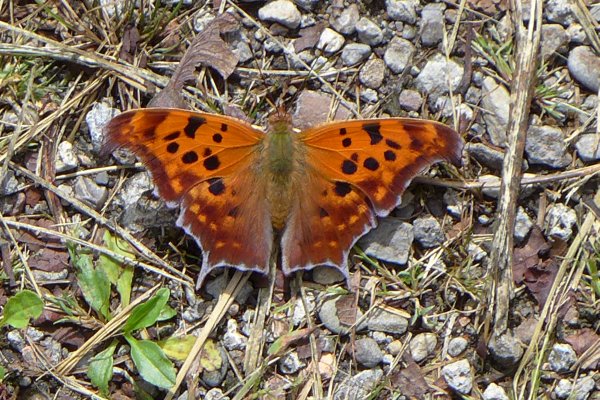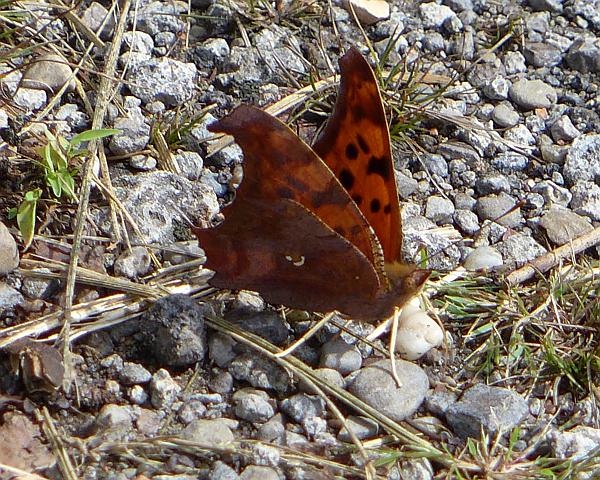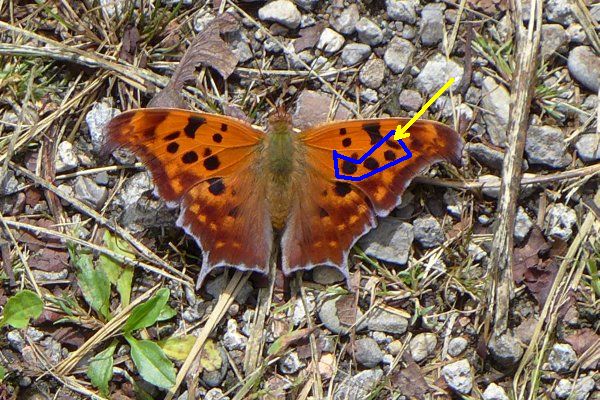
Let me begin by saying I am not a butterfly expert. I can recognize 10 butterflies, yes only 10, and I regularly misname three of those.
On Thursday at Raccoon Creek State Park I saw lots of Comma(*) butterflies so I took some pictures. Sorting my photos this morning, I looked for this one showing the comma on the underwing.

Uh oh! That white mark is not a Comma. That line has a gap! This butterfly is a Question Mark and it’s likely the others were, too.
Commas and Question Marks look similar because they’re closely related, but I could have identified them without a photo if I’d learned these field marks:
| Comma (Polygonia comma) | Question Mark (Polygonia interrogationis) |
| Less common | Common |
| Smaller wingspan 1.75″ to 2.5″ | Larger wingspan 2.25″ to 3.0″ |
| Forewing Topside: 3 post-median spots | Forewing Topside: 4 post-median spots |
| Hindwing ragged edge | Hindwing rather straight edge |
| Hindwing Underside: Comma is white, large, hooked on one end, continuous, bulging at both ends | Hindwing Underside: Question Mark is white, curved, broken in two pieces, one large & one small piece |
Here’s an illustration of the Question Mark’s 4 post-median spots, circled in blue with a yellow arrow pointing to dash/spot #4. Click here to see 3 spots on a Comma.

Both butterflies are active this month so I’ll get another chance to try my ID skills before they overwinter.
I hope I’ve finally corrected my punctuation.
(photos by Kate St. John)
(*) No, not Commas. Question marks.
Thank you, Kate, for the grammar lesson. With your clear explanations, I hope to someday identify as many as 10 butterflies.